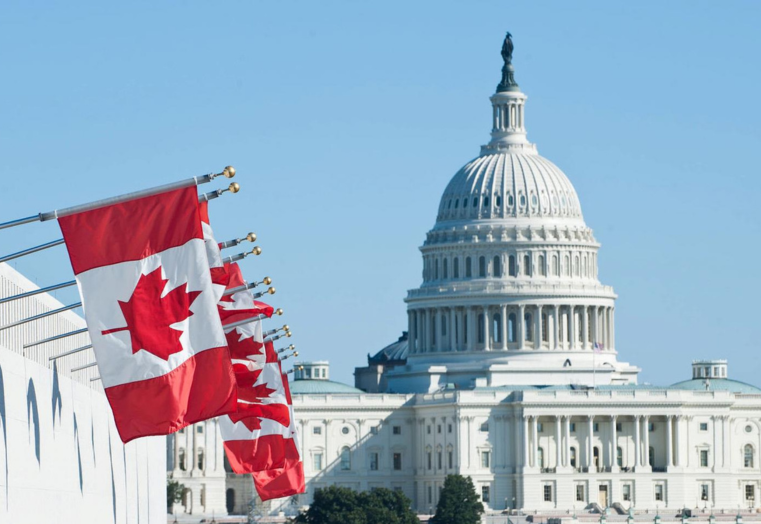D.C. Region
Things to know...
Details that are different from state to state and may make your posting just a little bit easier!
-
Weather & Natural Disasters
The DMV region experiences a range of weather conditions. Summer is known for its humidity and heat, urging a slower pace and a readiness for indoor retreats or shaded sanctuaries. Winters, on the other hand, are generally mild, but the city does occasionally dress in a blanket of snow. Living in the DMV means embracing a wide range of weather experiences, each season bringing unique joys and hurdles. Being adaptable and prepared is the best way to enjoy all the natural and cultural richness this historic region has to offer.
While the DMV region isn't prone to the same level of natural disaster threats as other parts of the U.S., residents still need to be aware of these risks and stay prepared for potential emergencies. Visit ReadyDC.gov for information addressing a variety of potential hazards including manmade and natural disasters. -
Neighbourhoods
People posted to the D.C. area often live in a variety of places depending on their commute tolerance, family demographics, and lifestyle priorities. Here are some of the more common options:
- Washington, D.C.: Very few people posted to D.C. will choose to live within the city itself for multiple reasons, one of which being the high crime rate. However, those who do decide to live in the area, enjoy the urban lifestyle, cultural attractions, and proximity to work. Neighborhoods like Dupont Circle, Adams Morgan, Capitol Hill, and Georgetown are popular choices.
- Suburbs in Maryland and Virginia: Most CAF families people prefer to live in the suburbs surrounding D.C. for more space, quieter neighborhoods, and potentially more affordable housing options. Suburban areas like Bethesda and Silver Spring in Maryland, and Arlington and Alexandria in Virginia, are popular choices due to their proximity to D.C. and access to public transportation.
- Commuter Towns: There are also commuter towns farther out from D.C. where people live and commute into the city for work. These towns often offer more affordable housing options and a suburban or rural atmosphere. Examples include Fairfax, Reston, and Herndon in Virginia, and Rockville and Gaithersburg in Maryland.
- Virginia and Maryland: Some individuals choose to live in other parts of Virginia or Maryland that are farther from D.C. but still within commuting distance. These areas might offer lower costs of living and a more relaxed pace of life.
Use this tool to help you learn more about a community. You can get information on schools, home values, weather, population and more > Access the Military One Source Neighbourhood Navigator.
-
Getting Around
Commuting in the DMV area faces challenges, mainly due to the heavy reliance on car use. Despite public transportation options like Metrorail, about 80% of commuters still drive to work, leading to significant traffic congestion during peak times.
A pro tip for orienting yourself within the city: The Capitol Building serves as a central point, dividing the city into quadrants (NW, NE, SW, SE), making it easier to understand addresses and locations. -
Base Information & Resources
The Washington, D.C., Maryland, and Virginia (DMV) area hosts a significant number of military bases, reflecting the region's pivotal role in national defense and military operations. In Washington D.C. itself, there are several key military installations, each serving different branches of the U.S. Armed Forces and supporting a variety of functions from medical services to headquarters operations. For more detailed information about each base, including contact information and specific services offered, you can visit Military One Source and select your state followed by your installation.
- Fort Belvoir
- Joint Base Myer-Henderson Hall (more commonly known as Fort Myer)
- Joint Base Andrews
- Joint Base Anacostia-Bolling
- NSA Bethesda
-
On-Base Medical Treatment Facilities
The 316th Medical Group predominantly provides medical care for the beneficiaries seen at Malcolm Grow Medical Clinics and Surgery Center and Joint Base Anacostia-Bolling Medical Clinic. Additionally, these groups have medics working across the National Capital Region including Walter Reed National Military Medical Center, Maryland; Fort Belvoir Community Hospital, Virginia; Fort George Meade, Maryland, and the Pentagon.
For general healthcare guidance while OUTCAN, please visit www.cfmws.ca/us-healthcare. -
Children's Education
For detailed information about school districts in the DMV Region, niche.com is a recommended resource. It offers comprehensive rankings, reviews, and comparisons of school districts, helping families make informed decisions based on various criteria including academic performance, diversity, and resources. Local online groups can also be a valuable source of information about school districts from families previously posted to Washington, D.C.
Francophone? Rochambeau is the go-to French International School for all grades!
Bonus Content: Kid Friendly DC




